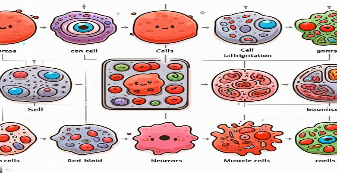Julian Gonzalez-Rubio1* Vu Thuy Khanh Le-Trilling2 Lea Baumann1 Maria Cheremkhina1 Hannah Kubiza1 Anja E. Luengen1, 3 Sebastian Reuter3 Christian Taube3 Stephan Ruetten4 Daniela Duarte Campos5 Christian Cornelissen6 Mirko Trilling2 Anja Lena Thiebes1* Front. Bioeng. Biotechnology. , Sec. Tissue Engineering and Regenerative Medicine, Volume 11 – 2023 | doi: 10.3389/fbioe.2023.1268782
The Severe acute respiratory syndrome coronavirus type 2 (SARS-CoV-2), which caused the coronavirus disease 2019 (COVID-19) pandemic, enters the human body via the epithelial cells of the airway tract. To trap and eject pathogens, the airway epithelium is composed of ciliated and secretory cells that produce mucus which is expelled through a process called mucociliary clearance. This study examines the early stages of contact between SARS-CoV-2 particles and the respiratory epithelium, utilizing 3D airway tri-culture models exposed to ultraviolet light-irradiated virus particles. These cultures are composed of human endothelial cells and human tracheal mesenchymal cells in a fibrin hydrogel matrix covered by mucociliated human tracheal epithelial cells. We found that SARS-CoV-2 particles trigger a significant increase in ciliation on the epithelial surface instructed through a differentiation of club cells and basal stem cells. The contact with SARS-CoV-2 particles also provoked a loss of cell-cell tight junctions and impaired the barrier integrity. Further immunofluorescence analyses revealed an increase in FOXJ1 expression and PAK1/2 phosphorylation associated with particle-induced ciliation. An understanding of epithelial responses to virus particles may be instrumental to prevent or treat respiratory infectious diseases such as COVID-19.
